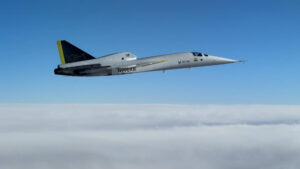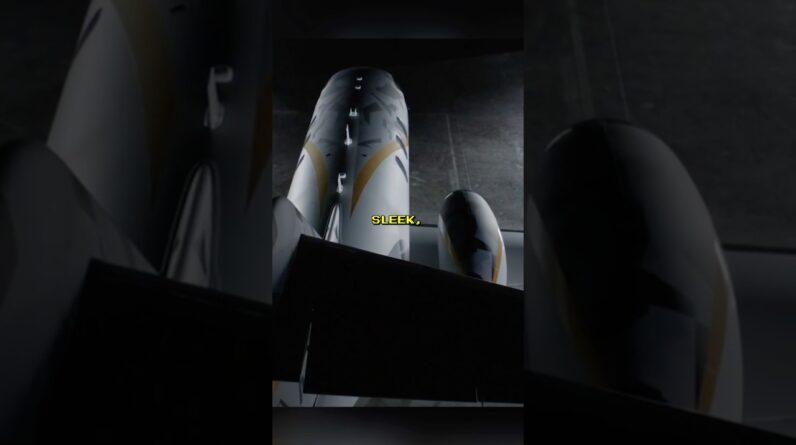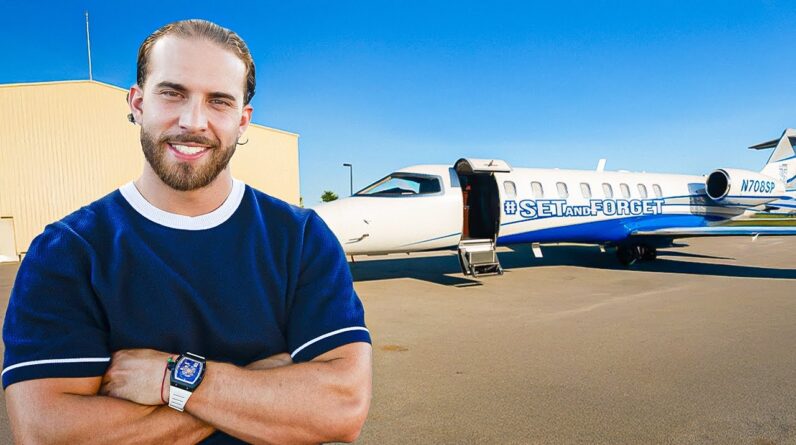It is the successor to the Concorde, decommissioned since 2003, the new Boom Supersonic XB-1 Overture prototype that broke the sound barrier on Jan. 28 by flying at a top speed of 1305 miles per hour (Mach 1.7) over the skies of California’s Mojave Desert.
Boom XB-1: The Supersonic Private Jet Prototype That Will Revolutionize Air Travel
The future of luxury air travel may be closer than we imagine. Boom Supersonic, a company at the forefront of the aviation industry, has developed the XB-1, a prototype supersonic jet that will serve as the basis for the future Overture, a commercial aircraft designed to fly at incredible speeds and dramatically reduce travel time between major world destinations.
Supersonic Boom XB-1: A Step Forward Toward Overture
The Supersonic Boom XB-1, nicknamed“Baby Boom,” is the first privately developed supersonic jet since the Concorde era. With a length of about 21 meters and an all-carbon-fiber structure, the prototype was designed to test key technologies that will be used in the Overture, the supersonic passenger jet that promises to revolutionize commercial aviation.
The XB-1 is powered by three General Electric J85-15 engines, enabling it to reach a maximum speed of Mach 1.7, or about 2,100 km/h. Although it cannot exceed three times the speed of sound, as erroneously reported by some sources, its ability to fly at supersonic speeds represents a major breakthrough in the realization of the Overture.
Objectives and Technological Innovations
Boom Supersonic designed the XB-1 to test a number of advanced technologies that will be implemented in the Overture. Key innovations include:
- Advanced Composite Materials: Carbon fiber fuselage provides high temperature resistance and light weight, improving aerodynamic efficiency.
- Optimized Aerodynamic Design: The tapered shape of the XB-1 Boom reduces air resistance and minimizes sonic boom, a key aspect of obtaining clearance for commercial supersonic flight.
- Enhanced Propulsion: J85-15 engines have been adapted to maximize efficiency and safety in supersonic flight.
- Cockpit with Cutting-Edge Technology: Equipped with advanced digital displays and fly-by-wire control systems , the XB-1 cockpit represents a milestone in the evolution of supersonic aviation.
Overture: The Supersonic Jet of the Future
The XB-1 is just the first step toward the realization of the Overture, a commercial and private jet that could take to the skies by 2029. With a capacity of about 65-80 passengers and an expected speed of Mach 1.7, the Overture will significantly reduce intercontinental travel times.
Boom Supersonic has already received orders from airlines such as United Airlines and Japan Airlines, a sign that interest in supersonic travel is more alive than ever. In addition, the company has committed to making the Overture a sustainable aircraft, using sustainable aviation fuel (SAF) and designing an aircraft with reduced carbon emissions.
I l Role of the XB-1 Boom in Private Jet Travel.
l Role of the XB-1 Boom in Private Jet Travel.
The private aviation sector could also benefit from the innovations developed for the Overture. Technologies tested with the XB-1 could be applied to future supersonic private jets, making luxury travel even faster and more efficient.
Today, many businessmen, celebrities and high-profile personalities use private jets to save time and enjoy maximum comfort. With a supersonic jet like the Overture, the very concept of private travel would change dramatically: intercontinental flights in a few hours, exclusive flight experiences, and state-of-the-art technology that would further enhance in-flight luxury.
Flight times cut in half on intercontinental routes
If the Overture actually enters service by 2029, it could become one of the most sought-after aircraft in the private jet industry. Imagine how long it would take to cover some of the most popular routes for luxury travelers:
- New York – London: Currently about 7 hours in a traditional jet, with Overture it would be reduced to 3 hours and 30 minutes.
- Los Angeles – Tokyo: A flight that takes about 11 hours today could be completed in 6 hours.
- Paris – Dubai: From the normal 6 hours and 50 minutes would be reduced to about 3 hours and 45 minutes.
- Milan – Miami: Today it takes about 10 hours, but with Overture the time would be cut in half to 5 hours and 30 minutes.
The Boom Supersonic XB-1 represents a key piece in the renaissance of commercial and private supersonic flight. With its innovative technologies and its role as a testbed for Overture, Boom Supersonic is paving the way for a new era of aviation.
Although the dream of supersonic flights suffered a setback after the retirement of Concorde in 2003, the Boom XB-1 and the forthcoming Overture show that the industry is more alive than ever. Soon, traveling from one part of the world to another in a matter of hours could become a reality accessible not only to commercial airlines, but also to discerning private jet customers.
Also read our article on the fastest Private Jet
The post Boom Supersonic XB-1 Overture, the Jet that Exceeds the Speed of Sound first appeared on Private Jet Finder BLOG.





